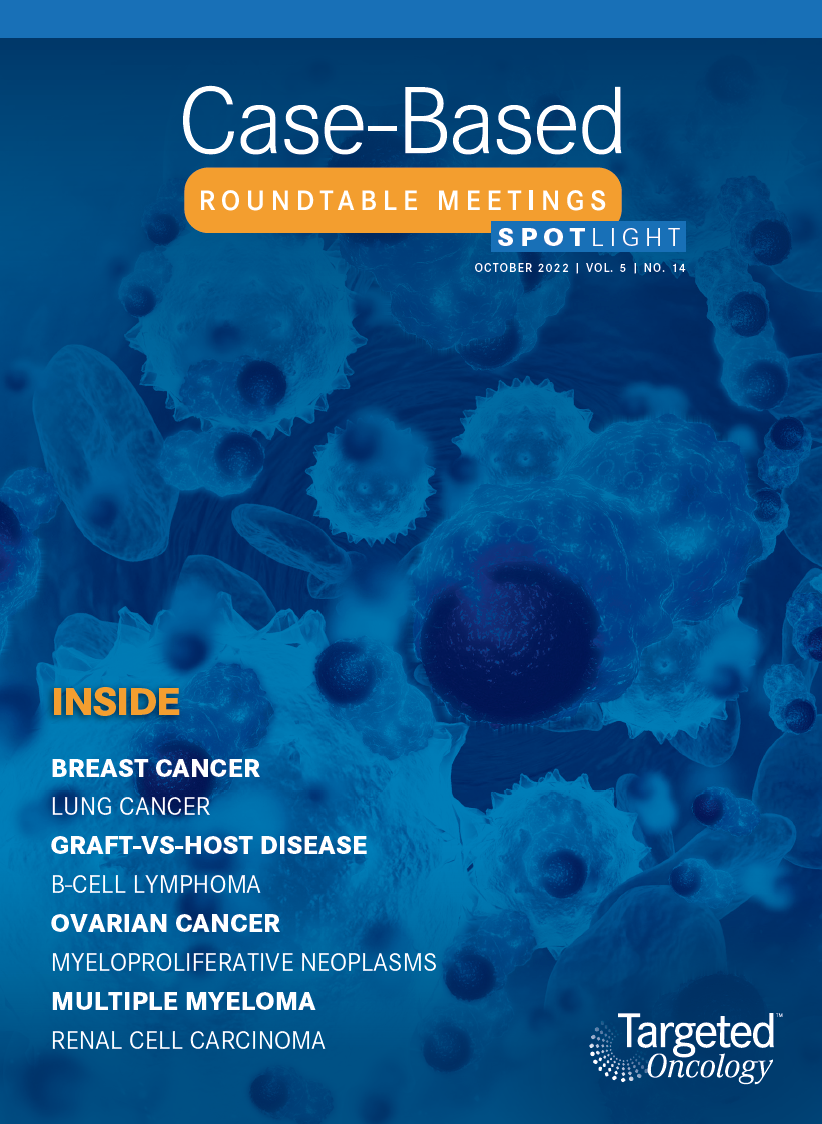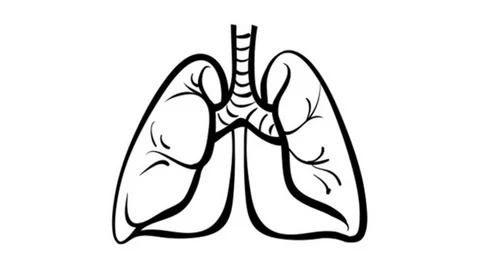Roundtable Discussion: Genetic Testing and Treatment in NSCLC With EGFR 19 Exon Deletion
During a Targeted Oncology case-based roundtable event, Rachel E. Sanborn, MD, discussed with participants the case of a patient with metastatic lung adenocarcinoma with potential targetable biomarkers.

Rachel E. Sanborn, MD (Moderator)
Medical Director
Thoracic Oncology Program
Phase I Clinical Trials Program
Robert W. Franz Cancer Research Center
Earle A. Chiles Research Institute
Providence Cancer Institute
Portland, OR


SANBORN: What is your center’s protocol? Do you have reflex testing? Do you order molecular testing for every patient with an adenocarcinoma that’s metastatic? Do you order selected mutation studies? Is PD-L1 testing a reflex at your institution? What are some of the nonclinical barriers to testing? Do you struggle with getting frequent QNS [quantity not sufficient] for your samples?
XIE: We do not have reflex testing. Every time I see an adenocarcinoma, metastatic tumor, or even nonmetastatic tumor adenocarcinoma, I will ask for panel testing sent to Providence Genomics. If I think that the patient needs chemotherapy clinically, then I give chemotherapy first without immunotherapy.
That’s rare, but I just give chemotherapy first while we’re waiting for the panel to come back. Usually they’re pretty quick, about a week, but now I think it’s slowing down, to maybe a couple weeks.
If I want to know [sooner], there are kits in my office with Guardant360 [CDx] liquid biopsy that come back within 5 business days. I always have an answer in terms of mutations. I think if someone needs chemotherapy fairly quickly, then I can’t wait.
Sometimes the sample comes down through a pleural effusion, and they’ll say, “The cellularity is not very good—it may limit the ability for molecular testing,” or something like that; so, we get a liquid biopsy at the same time. The good thing with a liquid biopsy is that [Guardant Health has] an arrangement with our institution, so the maximum out of pocket for patients is $100, if the insurance happens to not pay, which we run into a lot with the FoundationOne test—so we’re moving away from that in our institution.
INKLAB: At my center, I always have to direct the testing, so there’s no reflex testing. In fact, there’s no pathology in-house, so I would always send out for next-generation sequencing [NGS]. It is challenging because sometimes the specimen is so small that I am afraid to try to do PD-L1 first and reflex to EGFR testing.
Sometimes we run out of the specimen, and oftentimes we have a tiny sample that couldn’t run anything, so we have to do the liquid biopsy to help out. But we’ve had good luck with Oncotype MAP testing, which is NGS. [It has] a pretty fast turnaround time. Within 7 days, sometimes, I get the result back for the full panel, so I go with them more frequently now. I used to do a lot of FoundationOne testing, but I found that that was a little bit time-consuming. The liquid biopsy from FoundationOne we use has a good turnaround time for certain cases.
ZHANG: We have in-house pathology. If the patient has a high tumor burden, we can order the PD-L1 first here and also can send off the sample. If it’s adenocarcinoma, we could choose an ALK/EGFR mutation test. If it is not urgent to start the treatment, we do NGS. But NGS we send out too because of the turnaround time. It sometimes takes a couple weeks because of the pandemic, so we test for PD-L1 and several target mutations.

SANBORN: We talked about some of the challenges with QNS and what people are doing in that situation: liquid biopsies. In terms of those challenges about what we get when there is too little tissue and how to use that efficiently, how do people see the role of medical oncology in [regard to] education and maybe getting others on board like interventional radiology or interventional pulmonology in terms of biopsy specimens and communication with pathologists?
EY: I love having Guardant360 in the back pocket...for the “insufficient tissue” or “unsafe to biopsy” situation. Short of that, my experience with all the pathology systems in Portland, including Oregon Health & Science University, is somewhat a lack of consistency about how cases are processed, what gets done when, and in what order—because in our [region], pathology departments are run by administrators. I can always get what I want if I talk to the pathologist directly, but to my experience, it’s a bit hit-and-miss in all the systems. My standard practice would be to order NGS and PD-L1 testing. I would typically expect it to take 7 to 10 days to get the NGS results and less than that to get the PD-L1 results. My algorithms change. Even 5 years ago or so I was just asking for EGFR and ALK testing, and now it’s easier because we have more treatable mutations, although most of them I’ve never seen.
YAN: It’s getting more complicated now. We have all the in-house NGS by our own pathologists, and we try our best to use that, but it doesn’t cover everything. I often run into this problem. You run one test and you don’t have enough tissue for more tests.
That issue is pretty common, but I think liquid biopsy is more commonly used right now, so I’m more comfortable with liquid biopsy nowadays. Typically after the tissue [was obtained], because our interventional radiologists or pulmonologists are involved earlier, they would reach out to the medical oncologist first before they run any tests to ask if we want anything. The coordination has been good. The issue is the tissue. Sometimes we want to [run more tests, and there’s just not enough tissue. It’s a very common problem.

SANBORN: How would you tackle CNS involvement? Would you do brain radiation [such as SRS] before starting a TKI? Would you start a TKI up front? Would you start osimertinib up front? Would you start another TKI up front first in case they develop a T790M mutation after that? How would people tackle this patient?
ZHANG: I usually start with a TKI first. Regarding the SRS, it depends on the CNS involvement, [whether] it’s a solid metastasis or multiple lesions. So I definitely get the neurosurgeon on board as well.
SANBORN: What TKI would you start with?
ZHANG: Osimertinib.
CHINTAPATLA: I would go with the osimertinib up front. Also, I would do an assessment for the CNS involvement.
SANBORN: Would you start with brain radiation before TKI? Vice versa? Simultaneously?
CHINTAPATLA: I think at this point, given the data that we have, I would consider brain radiation. I’ve seen the data on osimertinib saying that it can be effective in brain metastasis. But, at least to my knowledge, we still ought to do brain radiation in non–small cell as opposed to small cell.
SANBORN: There is a changing practice [because] previously when we didn’t have treatments that had good CNS penetration, starting with brain radiation or concurrently using brain radiation was considered and recommended.
But, particularly with the more CNS-penetrant TKIs— osimertinib being one of those, and we also see this in the ALK arena too—there are times that we can start with a TKI as long as the patient is clinically stable enough, and [then we] monitor.1
There are times that radiation oncology may elect to wait for brain radiation until a little bit later. I think a lot of it depends on number and location of brain metastases and degree of symptom burden. I don’t think there is one good way to go with all of that.
XIE: If the brain lesions are not symptomatic, I usually treat with osimertinib, and I have good success. After a couple months, usually the brain lesions are shrinking. I think last time I had a woman who had more than 10 lesions. In the end, only 1 small lesion, maybe 5 mm, was left; the rest, all 9 lesions, were gone. Like you said, it has very good brain penetration. I usually go directly to osimertinib rather than doing the first-generation TKIs.
HARRIS: I would also start osimertinib up front, and I would probably refrain from a radiation oncology consultation immediately. I’d get them involved, but I probably would say, “Let’s watch for 2 or 3 months.” Probably at 8 weeks, I would do another MRI or CT of the brain and see the response. If it’s been a good response, we could consolidate with radiation therapy then or later.
I’m not so worried about the T790M mutation. I think if somebody has started erlotinib [Tarceva] plus or minus bevacizumab [Avastin] and gets a T790M mutation, oftentimes those patients don’t make it to second-line osimertinib. So I would be more inclined to use it up front.
SANBORN: The National Comprehensive Cancer Network guidelines for treatment…start with osimertinib.1 Other recommended options include the other TKIs, such as erlotinib with bevacizumab.

SANBORN: So are these co-pay challenges that people are referring to?
YAN: Yes, it’s frustrating because I started a woman on osimertinib a couple months ago. I think insurance approved it, but her co-pay was $1500 or something like that. She’s Asian, and she’s in her 70s, and she doesn’t speak English. Of course, she does not want to pay that. She was crashing, she was sick, and it took us a month to get her the medication just because of the co-pay. It’s frustrating.
SANBORN: Have other people had that experience?
INKLAB: Yes, I agree completely. It’s very difficult and frustrating to get the drug because of the cost to the patient, especially if you have Medicare without any supplemental coverage or you are commercial.
YAN: Especially when the patient does not speak English and doesn’t know how to deal with a financial assistance program.
INKLAB: It’s getting more complicated when everything has to come through the specialty pharmacies. They have to give you a call, and an interpreter is not available.
SANBORN: The interpreter availability is particularly a challenge right now with the pandemic. A number of places have lost a ton of their interpreters, which makes staffing for that difficult, too.
SANBORN: What about the atypical EGFR mutations, G719X, etc? What do people use to treat those? Do you use osimertinib, erlotinib, or afatinib [Gilotrif] for the atypical mutation?
HARRIS: There’s a new drug coming out for exon 20, but I’ve not used it. I think you can use afatinib as well, if you have nothing else to offer, and give it a try. There might be up to a 20% response rate with some of the more obscure mutations.
ANAND: I have a patient with an atypical mutation. When I looked it up, afatinib was the preferred drug, so I started the patient on that and she’s doing well so far.
ZHANG: I think the journal Nature has a good summary, and it depends on the mutation.2 Especially for these rare mutations, they have [an individually packaged] TKI. One of my patients has the L861Q mutation, so for that patient, I gave [afatinib] and it worked very well. But for that patient, I didn’t give osimertinib.

SANBORN: How do you handle these patients?
ZHANG: Repeat the biopsy, if possible.
XIE: I’ll get a new biopsy to see if there are other mutations. Most of the time there is no change. But if there is any unusual mutation that shows up, for 1 patient, I added erlotinib to osimertinib…and had an additional 6 months of progression-free survival, and then she progressed again before we moved to chemotherapy. Occasionally there are some changes that we can target.
ANAND: I have a patient who is progressing, and I don’t think it’s possible to do a biopsy because the lesions are too small, so I’m planning on giving this patient chemotherapy. I don’t generally give immunotherapy to patients who have an EGFR mutation. I was planning on switching to chemotherapy at this point.
SANBORN: Would you consider a liquid biopsy [when] tissue is not feasible?
ANAND: I would consider that, like Guardant360.
SOO: I would typically repeat the liquid biopsy. Unless the disease relapsed within 6 months or so, that probably will not change very much. Assuming it does not reveal any other potential targeted therapy, then I will do chemotherapy.
REFERENCES
1. NCCN. Clinical Practice Guidelines in Oncology. Non-small cell lung cancer, version 4.2022. Accessed September 16, 2022. https://bit.ly/3qKNBTm
2. Robichaux JP, Le X, Vijayan RSK, et al. Structure-based classification predicts drug response in EGFR-mutant NSCLC. Nature. 2021;597(7878):732-737. doi:10.1038/s41586-021-03898-1














